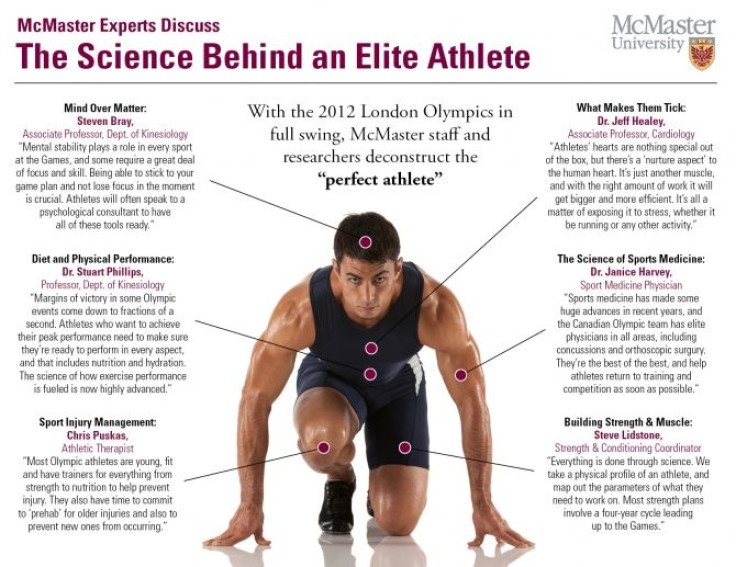Michael Phelps and Usain Bolt Were Made for Elite Sports

At the Olympics, we are fed stories time and time again about how athletes move away from their families and train for hours a day at the expense of other interests and goals. McMaster University has created an infographic that breaks down the various elements that go into making an Olympian – mind over matter, sports "prehab" to prevent new injuries and special diets. And to an extent, that is true. Ryan Lochte, who discussed using a tire to stay in shape, medaled at the Olympics. Still others have found their place at the podium through endless hours of hard work and self-sacrifice. Those are the stories we love, because they tell us the viewers that, no, we are not the Olympics, but maybe, if we had worked just as hard when we were the same age as the people on the podium right now, maybe we could have made it too.
And then there are other stories, which are no less compelling, but are much less relatable. Michael Phelps, who has been heralded by NBC and others as the Greatest Olympian of All Time, has won 22 medals, 18 of which are gold, at the age of 27. His fellow athletes admitted that he was not working as hard in London as they were, or even as he had during the 2008 Olympics in Beijing. Teammate Tyler Clary told a California newspaper earlier this year that Phelps was not "putting in the laps" that the others were. And yet, despite a sluggish start in the 2012 Olympics in London, Phelps won four gold medals and two silver medals – more than most Olympians win over an entire career.
Slate writer Justin Peters designated similarly astonishing Jamaican sprinter Usain Bolt as the other Greatest Olympian of All Time. Though he is derided by some as lazy and cocky, Bolt holds both the Olympic record and the world record in the 100 meters. In 2008, he also won the gold medal in the 200-meter run, which he plans to defend. Yesterday, before the 100-meter dash, sports commentators predicted a second-place finish as the United States' Justin Gatlin would take the gold. In the end, it wasn't even close. Bolt won with an Olympic record of 9.63 seconds, while his competitors were forced to keep up. The United States' Tyrone Gay came in fourth place – with a time of 9.80 seconds. Bolt is only the second sprinter ever to successfully defend his title as the 100-meter champion.
So what is the difference between Phelps, Bolt, and other Olympians? In Phelps' case, in particular, he is built for swimming, both for speed and for endurance. At 6'4", Phelps' wingspan is 6'7" – unusually long for his height. His torso, made for a 6'8" man, is long, lean, and triangular, which is perfect for hydrodynamics and increases his reach. His arms and legs are unusually large, which give him flipper-like abilities; his legs, short for his size, decrease drag. Phelps is also double-jointed, which gives him greater range of motion.
Bolt similarly is a freak of nature. At 6'4", the 25-year-old runner towers over his other competitors. In fact, his height should be a problem for him, as it opens him up to more wind resistance. Because of his long legs, Bolt only needs to take 41 steps to cross the finish line while his opponents need to take 45.
We are told over and over again that hard work and perseverance will win out over talent. Sometimes it is true. But sometimes, as with Phelps and Bolt, people win the genetic lottery, and no amount of work will supersede them.



























